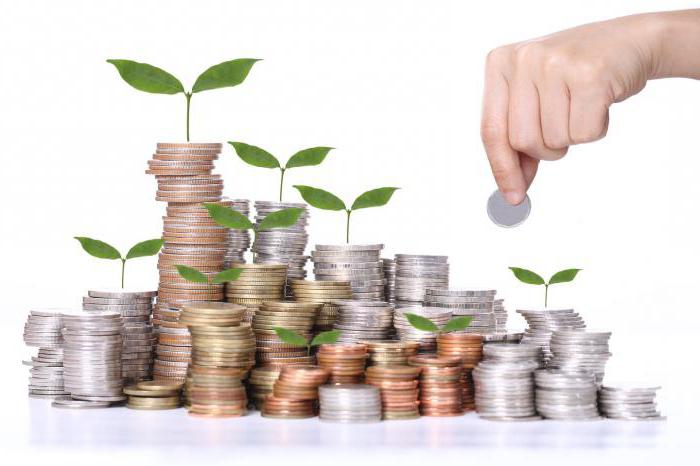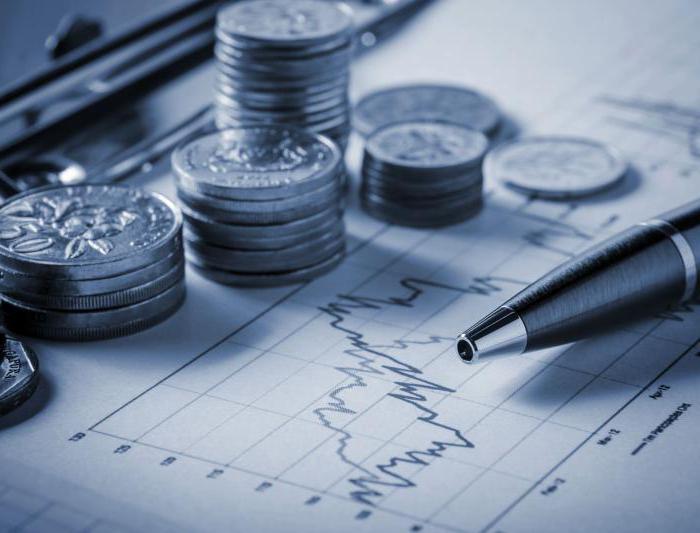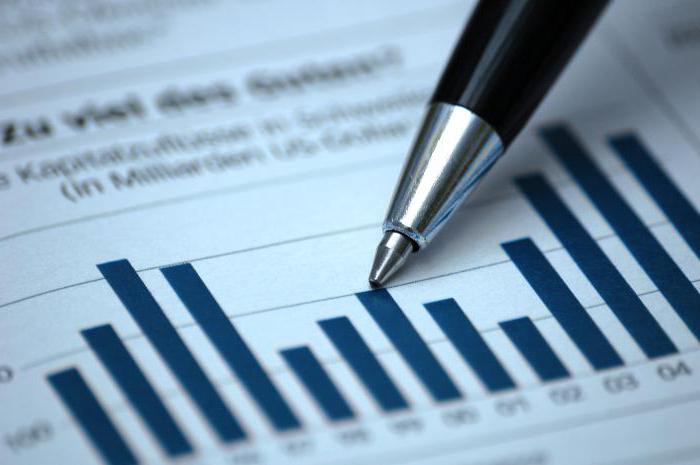Proper business conduct is a task requiring skills and abilities, including working with money. How to make available resources generate revenue? You can not only put them into production, but also invest, if volumes allow. Investing in recent years has become a widespread practice in Russia, following in the wake of American business. Speaking about such a method of generating income from the money available to the entrepreneur, it is necessary to mention the return on investment. How does this happen and how to calculate the profitability of a potential investment?

Investment project: general view
There are five main stages of the project life cycle in which you can invest money with the expectation of making a profit in the long term:
- development of design documentation;
- technology development and achievement of planned production capacities;
- operation of the facility, allowing you to return the money invested;
- making additional profit;
- liquidation of an asset (resale).
Important indicators
Temporary effectiveness is determined by the fact that the first three stages require a minimum of time, while the fourth lasts long enough. About half a century ago, to reflect the benefits, a return on investment coefficient of СО was used, which reflects a static period. It was practically not connected with the time factor, that is, it did not take into account how early they began to receive returns from the invested funds.
What is happening in reality? The return on investment begins with depreciation. Once the funds are “automatically” returned to the investor even when the real duration of the fixed assets equals and exceeds the settlement period. This situation is also possible with zero profit.

Modern methodologies involve the application of the "payback rule". In the framework of this theory, payback is due to profit and depreciation, that is, net income. When calculating this parameter, you need to remember that a one-time return on investment is considered unprofitable and insufficient, since it is not enough to expand production. Therefore, the main task of any investor is to achieve increased efficiency.
Investment and return on investment
Payback in the framework of a modern market economy suggests that the income received is equal to or exceeds the costs of the project. At the same time, the accumulated net income from negative at the beginning of the project goes into a positive value.
Many economists equate the concepts of “return period” and “payback period”. And although the time period may indeed coincide, the concepts are not identical.
The payback rule assumes that the income received through the project is equal in magnitude to the funds invested in it. Income is considered as gross profit. At the same time, some analysts argue that it is incorrect to conduct calculations, taking into account only net profit after tax. The return on investment as invested funds, in turn, suggests that the investor can withdraw real money from the project in the amount invested by him earlier.

Refund: how and due to what?
The calculation of the effectiveness of the investment project is based on:
- net income;
- that part of the income that can actually be obtained from the project;
- depreciation.
The opinions of experts regarding the application of one or another of these three points differ. At the same time, earning income by withdrawing funds at the closure of an investment project ahead of schedule is not considered a profit showing a payback.Free funds are allowed.

ROI: return on investment
The formula used to calculate the ROI reflects the return on investment. The abbreviation itself when decoding and translating from English means "return on investment." This indicator is indispensable for calculating the payback. The profitability of a particular project is calculated according to one of the universal formulas. To take into account the errors, you will have to pay attention to the features of a particular project.
Universal calculation formula:
ROI = (profit - project cost) / invested amount * 100%.
The resulting value will be the main component of the analysis of potential investments. The more profitable the opportunity, the ROI formula will show the best result. A positive value indicates that the company is operating at a profit.

By the way, in practice, the use of the coefficient is widespread not only among analysts and experts of the financial sector, but also in government bodies and companies dealing with loans. Owning a certain business, you can apply the methodology to assess the possible profit of the project. The only difference is in the basis: instead of the amount invested in a percentage, the authorized capital is taken.
General approach and detail accounting
How to calculate the return on investment? In the simplest case, profitability is easy to determine. It is necessary to take into account all expenses and evaluate the planned benefit, subtracting the amount of investments from it. Absolute, percentage - choose the expression that is more convenient for you.
In order for the picture to gain depth, you need to carefully calculate all the costs associated with the implementation of the project. Remember that the investment does not end with the first investment: in the future, the business will require new financial injections. In addition, tax payments can also be taken into account. The ROI result, if you take into account taxes, depreciation and other payments, will be significantly lower than calculated “in a simple way”.
What do the experts say?
When the investment strategy is calculated, it will be reasonable to make a complete list of all costs taken into account when calculating the coefficient. However, the opinions of experts on what needs to be taken into account, and to this day, differ. If some are convinced that it is enough to take into account the direct costs incurred by the entrepreneur for the first year of investing money in the project, then others believe that the most correct results are given taking into account the costs of the investor in the following years.

Of course, the estimated payback period for investments very much depends on whether to take into account indirect costs or not. Those are not necessarily directly related to the project. But can also come from additional business activity. Many agree that it is necessary to take into account the costs of services, software, office equipment and other equipment. Do not deprive depreciation, that is, refunds.
How to calculate: different approaches
The simplest method is listed above. As costs take the amount for the first year of participation in the project. If this is designed for several years, conclusions about profitability are made on the basis of the first year of implementation. But with this approach it is impossible to take inflation into account, which is considered the weakest feature.
An investment strategy can be built taking into account the ROIC coefficient. Here, first they calculate what the net income after taxes is, then they determine the total amount of indirect and direct investments in the business. Return on investment is the difference in the values received.

Finally, you can estimate approximately the revenues that the project will provide in the future, as well as costs (they are considered at a minimum). The difference in the values obtained will be the amount of return on investment. The expenses also include those expenses incurred by the investor in connection with the launch and further operation of the project. It is believed that this approach is optimal for calculating the benefits of investment in software.
How reliable is it?
Calculating a possible return on investment for an interested project, not every businessman as a result really decides to invest in an enterprise. Many will find it too risky to launch a new project. At the same time, polls indicate that many would like to try themselves in the role of investors, having sufficient guarantees of the reliability of a profitable business.
Are there any refundable investments? Yes, there really are. As a rule, an investor, investing money, receives some collateral. Another option is project insurance. At the same time, you need to understand that the higher the yield, the more risky the project, that is, it will not always be possible to choose an insurer who agrees to cooperate with the enterprise.
How to decide on investing?
How to enter an investment project? An example of an ordinary spontaneous purchase is familiar to all of us - these are the so-called mood purchases. But when it comes to something big, the mechanisms that push people to make a deal are completely different. Potential investors are most responsible for investing in equipment, machinery, tools, which in the future can be used in their enterprise. No wonder: everyone wants reliability, confidence in the future and minimizing costs.

The return on investment ratio is the best way to evaluate the return on funds and understand whether it is worth the time and money. If you doubt a specific project and are considering investing in it, you can turn to external experts when your own calculations seem inconclusive.
Common practice
There are practically no newcomers to the investment business who would not calculate the ROI for any project in their field of vision. But is this tool so effective? If an investment project is being considered, an example of settlements may turn out to be negative, which will force one to refuse to participate; the opposite situation is also possible - the calculations will be rosy, but in practice the situation will turn out differently. There are several factors that need further attention. This will help to cover the situation more fully.
First of all, the time value of money should be mentioned. A certain period of time passes, and the sum, which seemed large, turns into a rather insignificant one. This is due to depreciation. Influence:
- inflation;
- rate;
- jumps in the economy.
Here such a factor also plays a role: the western economy is much more stable than the Russian one, and the euro and dollar are more stable currencies than the ruble. Therefore, where the calculation of ROI for a Western company shows a fairly reliable figure, for a Russian company the result will not accurately reflect the future of investments. On average, money is depreciated by 6-15% per year. The purchasing power of a unit of currency decreases over time, and a product that costs a thousand rubles today will be valued at 1060 rubles in a year.
Scheduled Return
Turning to some company, a potential investor usually sees the following sentence: "We will provide you with up to 60% return." This means that, on average, investments made in this company had such a rate of return. But there is no guarantee that it is your money that will work itself out at such a percentage. Much is determined by risks, as well as by industry - for some, indicators are greater, for others, less.

Say, analyzing startups in the field of information technology, it can be concluded that 2-3 out of a dozen projects will be "burned out". That is, the investor must be aware that he has about 70% chance of losing money. In addition to the return on investment, it would be nice to get some profit. There is a special indicator - the required rate of return ("the required level of profitability"). It is desirable that it be a few hundred percent.
Threshold profitability
Finally, speaking of return on investment, attention must be paid to the indicator of the barrier rate.What is this about? Suppose, with a total cost of capital of 13%, there is a proposal to invest in a project with a yield of 14%. The difference of one percent is not the amount for which you need to fight, agree? Therefore, establish some indicator of the difference. Projects showing values below the threshold are discarded immediately. Usually they try to take a difference of 4 percent or more.

To summarize
Return on investment and calculation of the payback of an interested project is not an easy task requiring an integrated approach. To take into account all the risks, it makes sense to consider both the costs associated with the launch of the project, as well as those that the company incurs in the first years of life. Be sure to calculate the ROI coefficient, but do not draw conclusions only on it: RRR indicators and other financial ratings will help to better understand the prospects of the project.